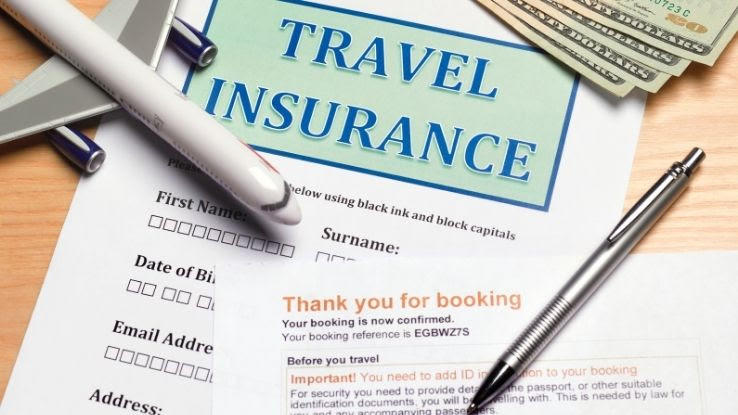A Biased View of Pacific Prime
A Biased View of Pacific Prime
Blog Article
Pacific Prime for Beginners
Table of ContentsThe Best Strategy To Use For Pacific PrimeGetting My Pacific Prime To WorkThe Only Guide for Pacific PrimeRumored Buzz on Pacific PrimeAll About Pacific Prime

This is since the information were accumulated for a period of strong economic performance. Of the estimated 42 million people who were without insurance, just about regarding 420,000 (regarding 1 percent) were under 65 years old, the age at which most Americans come to be qualified for Medicare; 32 million were grownups in between ages 18 and 65, around 19 percent of all adults in this age; and 10 million were kids under 18 years old, concerning 13.9 percent of all youngsters (Mills, 2000).
These quotes of the variety of individuals without insurance are produced from the yearly March Supplement to the Existing Population Survey (CPS), conducted by the Census Bureau. Unless or else kept in mind, national quotes of individuals without medical insurance and percentages of the populace with various sort of coverage are based upon the CPS, the most extensively used resource of price quotes of insurance coverage and uninsurance prices.
All About Pacific Prime

Still, the CPS is particularly valuable because it generates yearly estimates relatively swiftly, reporting the previous year's insurance policy protection estimates each September, and due to the fact that it is the basis for a regular collection of estimates for even more than two decades, allowing for evaluation of fads in protection over time. For these factors, along with the considerable use the CPS in various other studies of insurance policy protection that are presented in this record, we rely on CPS estimates, with restrictions noted.

The quote of the variety of uninsured individuals increases when a population's insurance coverage condition is tracked for several years. Over a three-year period starting early in 1993, 72 million people, 29 percent of the U.S. https://linktr.ee/pacificpr1me. populace, were without insurance coverage for at the very least one month. Within a single year (1994 ), 53 million people experienced a minimum of a month without coverage (Bennefield, 1998a)
6 out of every ten without insurance adults are themselves utilized. Functioning does boost the probability that one and one's family members will have insurance coverage, it is not a warranty. Even members of households with 2 permanent breadwinner have practically a one-in-ten opportunity of being without insurance (9.1 percent uninsured rate) (Hoffman and Pohl, 2000).
The Ultimate Guide To Pacific Prime
New immigrants make up a considerable percentage of people without medical insurance. One analysis has associated a significant portion of the recent development in the dimension of the U.S. uninsured population to immigrants who arrived in the country between 1994 and 1998 (Camarota and Edwards, 2000). Recent immigrants (those that pertained to the USA within the past four years) do have a high rate of being without insurance (46 percent), yet they and their youngsters make up simply 6 percent of those without insurance policy country wide (Holahan et al., 2001).
The connection in between medical insurance and access to care is well developed, as recorded later on in this chapter. Although the connection in between wellness insurance coverage and health results is neither straight neither easy, a substantial professional and health solutions research literature links health insurance policy protection to enhanced access to care, much better quality, and boosted personal and populace health status.
Levels of analysis for examining the results of uninsurance. This conversation of medical insurance protection concentrates mainly on the U.S. population under age 65 because practically all Americans 65 and older have Medicare or various other public insurance coverage. It focuses particularly on those without any kind of health insurance policy for any kind of size of time.
Not known Factual Statements About Pacific Prime
The problems faced by the underinsured are in some respects comparable to those encountered by the uninsured, although they are generally much less extreme. Health and wellness insurance policy, however, is neither necessary nor sufficient to get accessibility to clinical services. The independent and direct effect of health and wellness insurance policy protection on access to wellness services is well developed.
Others will certainly obtain the health and wellness care they require even without health insurance coverage, by spending for it expense or seeking it from companies who provide treatment complimentary or at highly subsidized prices. For still others, medical insurance alone does not guarantee receipt of treatment due to the fact that of other nonfinancial obstacles, such as an absence of healthcare suppliers in their area, minimal access to transport, illiteracy, or etymological and cultural distinctions.
Rumored Buzz on Pacific Prime
Formal study regarding without insurance populaces in the United States dates to the late 1920s and early 1930s when the Board on the this article Price of Treatment produced a series of reports about financing doctor office brows through and hospitalizations. This issue came to be prominent as the numbers of medically indigent climbed during the Great Anxiety.
Report this page